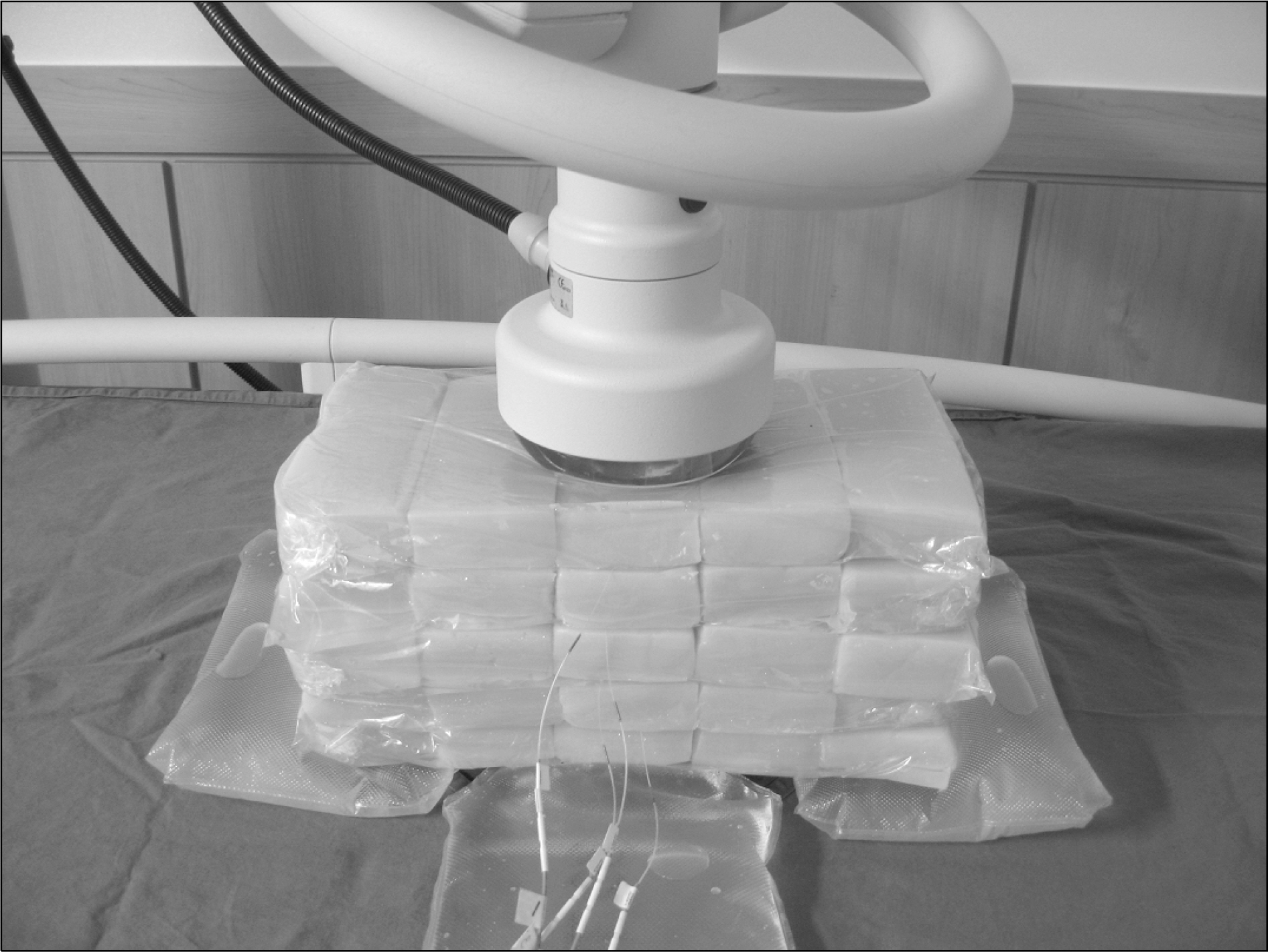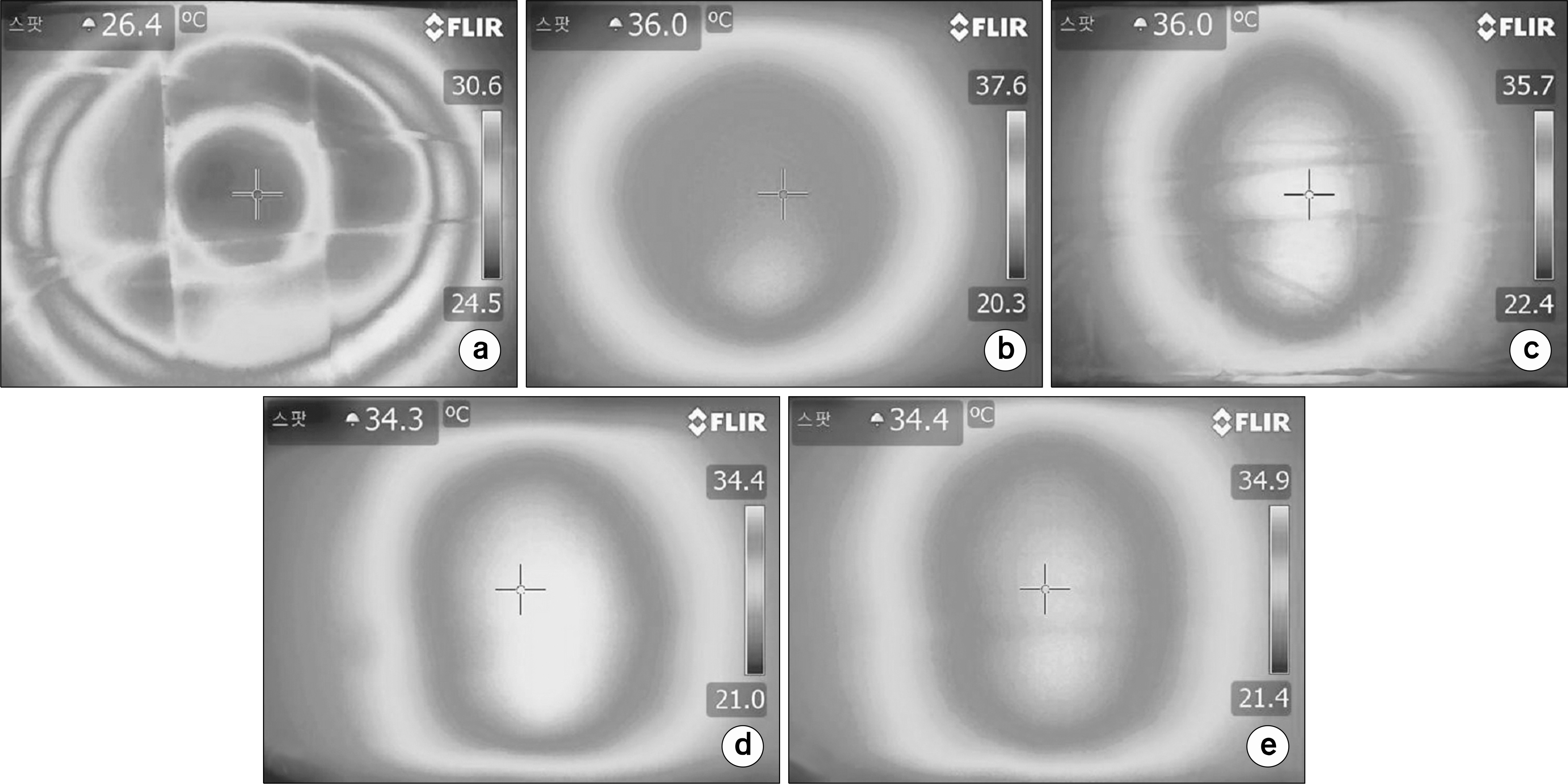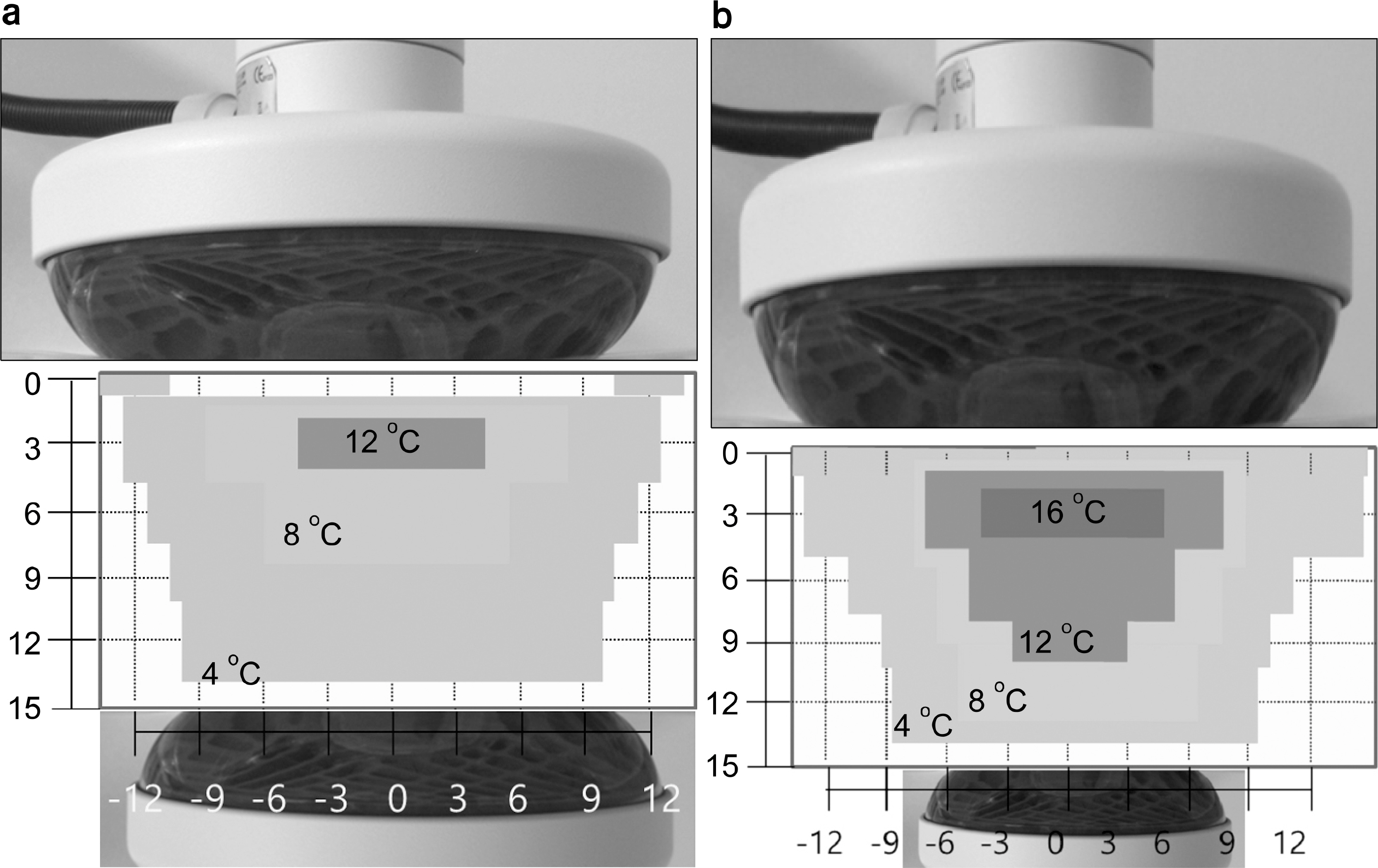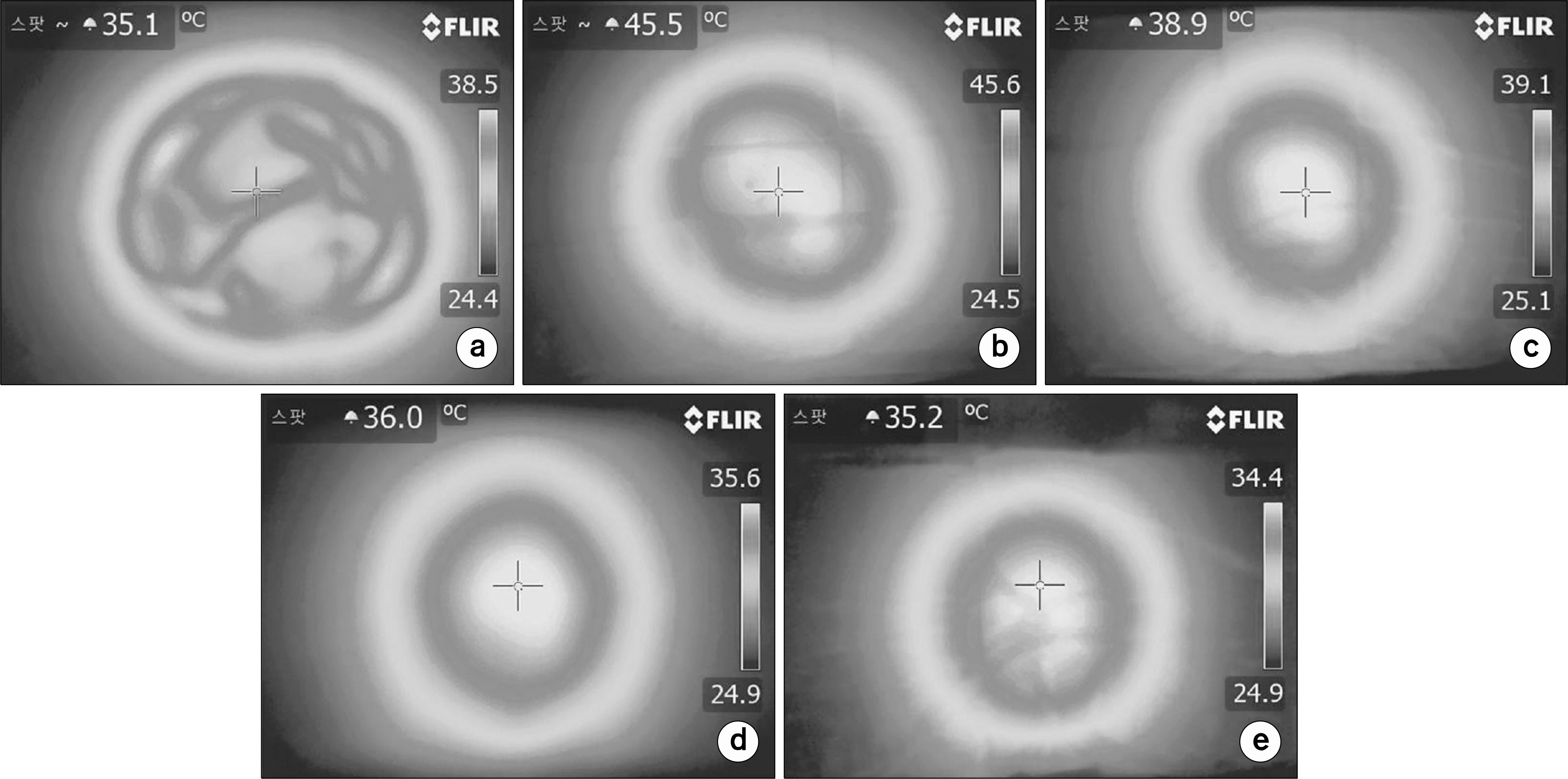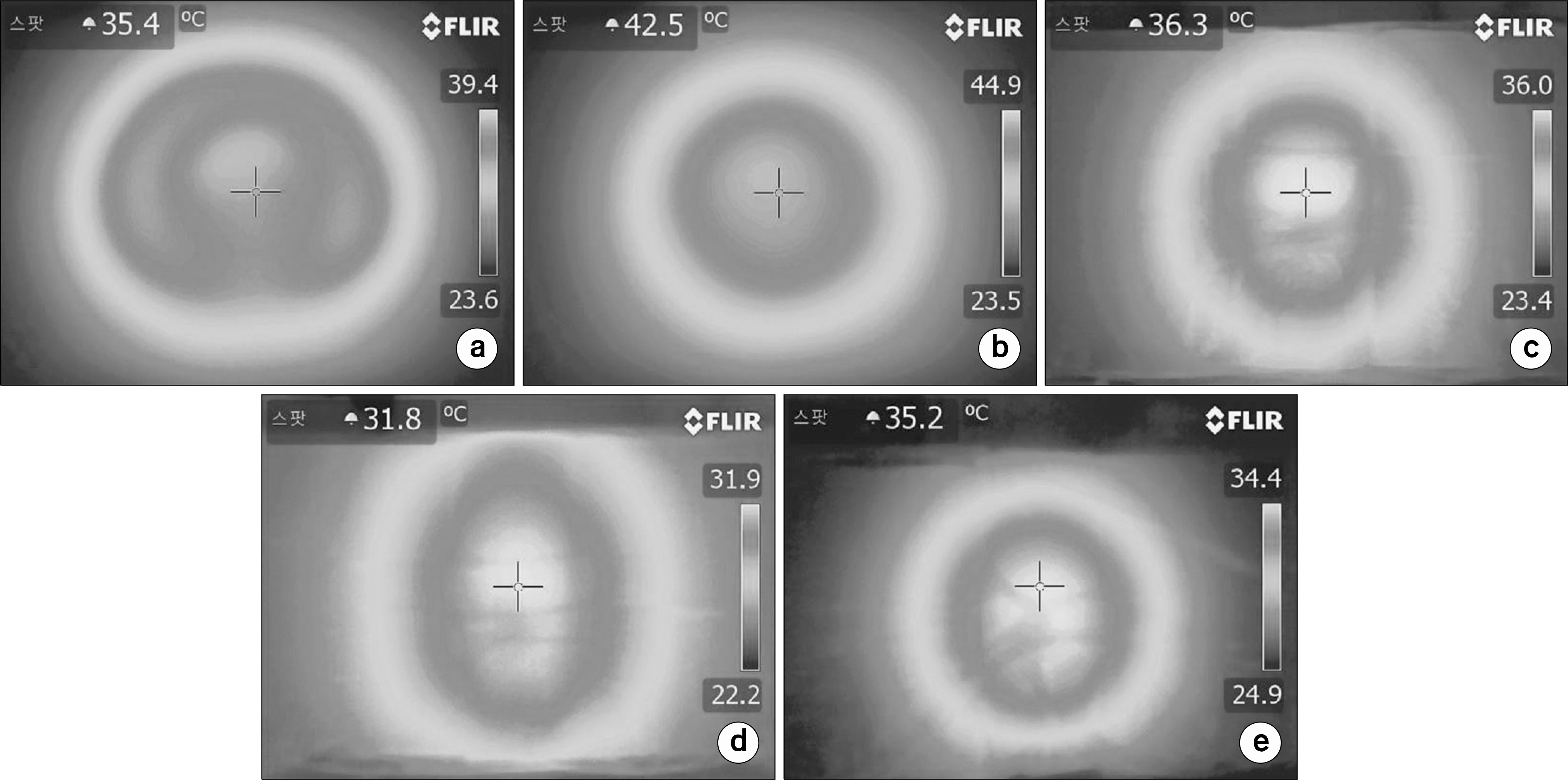Prog Med Phys.
2014 Mar;25(1):1-7. 10.14316/pmp.2014.25.1.1.
Assessment for the Temperature according to the Electrode Diameter of Radio Frequency Hyperthermia Using Agar Phantom
- Affiliations
-
- 1Department of Radiation Oncology, Dongsan Medical Center, Keimyung University School of Medicine, Daegu, Korea. ykoh@dsmc.or.kr
- 2Department of Physics, College of Science, Yeungnam University, Gyeongsan, Korea.
- KMID: 1910552
- DOI: http://doi.org/10.14316/pmp.2014.25.1.1
Abstract
- Hyperthermia is effective treatment modality when it combine with the radiotherapy treatment. It is important to verify the temperature distribution of (patient's) body for the safety and effective treatment during raising the temperature. In this study, we raised the temperature in agar phantom using radio frequency (RF) Hyperthermia and protocol that manufacture recommend. Temperature distribution measured 5 section of 5 cm thickness with agar phantom. When the temperature was raised according to the increase energy. Temperature distribution was elevated at similar domain regardless of energy. The temperature tend to be increased at up side then bottom side and also increase when A large electrode was used than small one.
Keyword
MeSH Terms
Figure
Reference
-
1. de Bruijne M, Van der Zee J, Ameziane A, Van Rhoon GC. Schlag PM: Quality control of superficial hyperthermia by treatment evaluation: Int J Hyperthermia. 27(3):199–213. 2011.2. Overgaard J, Gonzalez Gonzalez D, Hulshof MCCM, et al. Trial of hyperthermia as adjuvant to radiotherapy for recurrentor metastatic malignant melanoma. Lancet. 345:540–543. 1995.3. Vernon CC, Hand JW, Field SB, et al. Radiotherapy with or without hyperthermia in the treatment of superficial localized breast cancer - results from five randomised controlled trials. Int J Radiation Oncology Biol Phys. 35:731–744. 1996.4. Jones EL, Oleson JR, Prosnitz LR, et al. Randomized trial of hyperthermia and radiation for superficial tumors. J Clin Oncol. 23:3079–3085. 2005.
Article5. 추성실, 김귀언, 노준규. 암 치료를 위한 RF 온열장치의 개발과 가온 특성. 대한암학회지. 18(2):183–193. 1986.6. Wust P, Hildebrandt B, Sreenivasa G, et al. Hyperthermia in combined treatment of cancer. Lancet Oncol. 3(8):487–97. 2002.
Article7. Rietveld PJM, Van Putten WLJ, Van der Zee J, Van Rhoon GC. Comparison of the clinical effectiveness of the 433 Mhz lucite cone applicator with that of a conventional waveguide applicator in applications of superficial hyperthermia. Int J Radiat Oncol Biol Phys. 43:681–687. 1999.
Article8. Lee WM, Gelvich EA, Van der Baan P, Mazokhin VN, Van Rhoon GC. Assessment of the performance characteristics of a prototype 12-element capacitive contact flexible mi crostrip applicator (CFMA-12) for superficial hyperthermia. Int J Hyperthermia. 20:607–624. 2004.9. Diederich CJ, Stauffer PR. Pre-clinical evaluation of a microwave planar array applicator for superficial hyperthermia. Int J Hyperthermia. 9:227–246. 1993.
Article10. Lee ER, Wilsey TR, Tarczy-Hornoch P, et al. Body conformable915MHz microstrip array applicators for large surface areahyperthermia. IEEE Trans Biomed Eng. 39:470–483. 1992.11. Samulski TV, Fessenden P, Lee ER, Kapp DS, Tanabe E, McEuen A. Spiral microstrip hyperthermia applicators: Technical design and clinical performance. Int J Radiat Oncol Biol Phys. 18:233–42. 1990.
Article12. Rossetto F, Stauffer PR. Theoretical characterization of dual concentric conductor microwave applicators for hyperthermia at 433 MHz. Int J Hyperthermia. 17:258–270. 2001.13. Jacobsen S, Stauffer PR, Neuman DG. Dual-mode antenna design for microwave heating and noninvasive thermometry of superficial tissue disease. IEEE Trans Biomed Eng. 47:1500–1509. 2000.
Article14. Juang T, Stauffer PR, Neuman DG, Schlorff JL. Multilayer conformal applicator for microwave heating and brachytherapy treatment of superficial tissue disease. Int J Hyperthermia. 22:527–544. 2006.
Article15. Jordan Andreas, Scholz Regina, Maier-Hau! Klaus, et al. Presentation of a new magnetic field therapy system for the treatment of human solid tumors with magnetic fluid hyperthermia. Journal of Magnetism and Magnetic Materials. 225:118–126. 2001.
Article
- Full Text Links
- Actions
-
Cited
- CITED
-
- Close
- Share
- Similar articles
-
- Comparison of Temperature Distribution in Agar Phantom and Gel Bolus Phantom by Radiofrequency Hyperthermia
- Thermal Distribution in a Phantom Using 8MHz RF Capacitive Type Hyperthermia
- Development and Thermal Distribution of An RF Capacitive Heating Device
- A Thermoprifile Study of 2,450-MHz Microwave Thermogenerator in Phantom and Animal Tumor
- An Experimental Study on the Effect of Combined X-ray and Microwave Hyperthermia on the Rectum and Urinary Bladder of Rats

